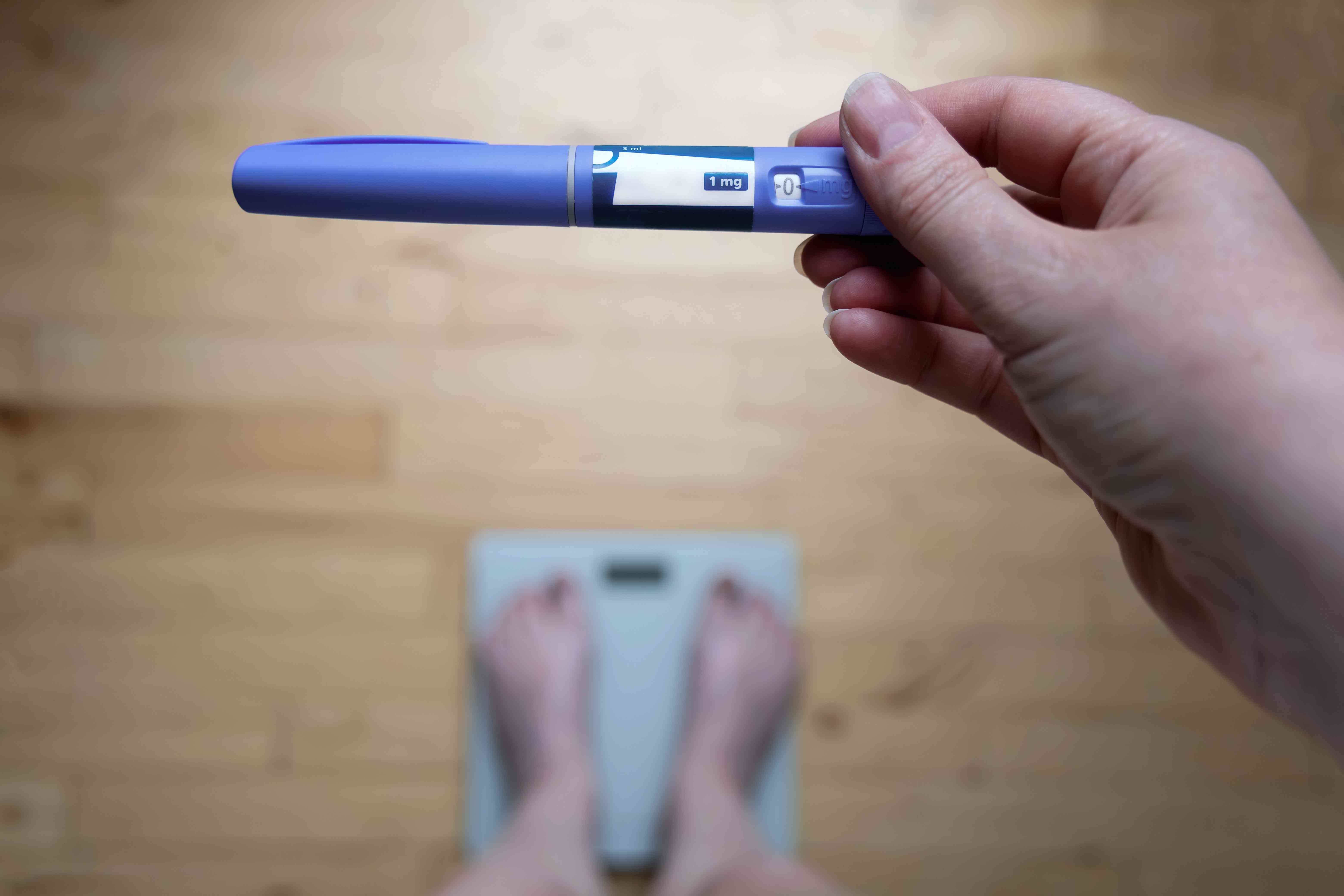What to Know About 'Ozempic Feet,' the Latest GLP-1 Side Effect Gaining Attention Here's how to help this surprising side effect of weight loss drugs

Losing weight rapidly may cause "Ozempic feet," the term for sagging skin and a loss of fat padding on your feet

Carolina Rudah / Getty Images
- “Ozempic feet” is another surprising side effect of weight loss medications like Ozempic.
- Ozempic feet are characterized by sagging skin and reduced fat padding on feet, which occur when someone rapidly loses weight.
- Experts said slower weight loss, staying hydrated, and wearing supportive shoes can help with Ozempic feet.
With anti-obesity medications like Ozempic, Wegovy, and Zepbound exploding in popularity in recent years, there’s no shortage of chatter about surprising side effects, such as “Ozempic face” and “Ozempic butt.”
Now, reports online are calling out another unexpected change triggered by these drugs, known as GLP-1s: “Ozempic feet.”
The focus on foot-related side effects appears to stem from social media comments speculating that possible changes in the appearance of Sharon Osbourne’s and Oprah Winfrey’s feet—shown in recent photos—are due to GLP-1 use. While neither celebrity has commented on the theory, doctors say that the medications can, in fact, alter the look of someone's feet.
According to Scott Isaacs, MD, president of the American Association of Clinical Endocrinology, ozempic feet “is characterized by sagging skin, reduced fat padding, and visible tendons or veins in the feet."
It occurs when someone loses an extreme amount of weight fast; those pounds are spread out across the entire body, coming not just from the face and butt but also other areas, including the feet.
“The underlying mechanism is that when fat is lost quickly, the skin’s natural elasticity may not be able to keep up,” Isaacs told Health. That’s especially the case if the skin has been stretched for a while or if collagen and elastin levels are reduced due to factors such as age, genetics, and the duration of prior overweight status.
Is Ozempic Feet a Cause For Concern?
When the fat on your feet—particularly beneath the heel and ball—shrinks, it can have unpleasant ripple effects.
“The feet’s fat pads act as natural shock absorbers, and the rapid loss of tissue can leave the skin in the foot lax and unsupported,” said Isaacs.
In turn, people might feel like they are walking on bone, making standing and walking painful and uncomfortable. This discomfort may also cause people to alter how they walk, potentially leading to changes in gait mechanics, explained Isaacs.
In some cases, the changes can increase the risk of developing other foot problems or exacerbate existing conditions, he said, which can impede the ability to exercise.
If this happens, Karl Nadolsky, DO, a clinical endocrinologist, obesity specialist, and clinical assistant professor of medicine at Michigan State University College of Human Medicine, said it’s time to see a podiatrist.
“Otherwise, we need patients working with their physician, dietitians, and prioritizing strength training while losing weight and treating diabetes,” he told Health.
It’s also worth noting that while “Ozempic feet” has brought further attention to GLP-1s, Nadolsky said, “there is no reason to think this effect is unique to GLP-1 drugs as it seems reasonable to possibly occur with any rapid and significant weight loss.”
Ozempic Hands Can Also Occur
The phenomenon doesn’t just affect the face, butt, and feet. With rapid weight loss, the hands may show a noticeable reduction in subcutaneous fat and look more skeletal or aged—hence, the nickname “Ozempic hands” or “Ozempic finger.”
“This occurs because the hands, like the feet and face, are areas where fat loss is quickly visible, leading to thinning skin, loss of volume, and more prominent veins and tendons,” said Isaacs. “The mechanism is similar to that seen in other body areas: As fat is lost rapidly, the skin may not contract quickly enough, revealing underlying structures and contributing to an aged look.”
Can You Avoid Ozempic Feet?
Nadolsky said it’s not as concerning when people who will meaningfully benefit from a GLP-1 end up with Ozempic feet. “The more severe the disease of obesity by measure of obesity-related disease such as type 2 diabetes, heart disease, or history of stroke, heart failure, kidney disease, sleep apnea, etc., get the most benefit compared to risks or side-effects,” he said.
People without obesity shouldn’t be treated with these medications because there’s no indication, and it’s unlikely that the benefits outweigh the risks of side effects, Nadolsky added.
While there is no guaranteed way to completely prevent “Ozempic feet,” gradual, slower weight loss gives the skin more time to adapt and may decrease the likelihood of significant sagging or loss of fat padding in the feet, said Isaacs.
“Staying well-hydrated is also important, as it helps maintain skin elasticity and prevents dryness or cracking that can worsen foot discomfort,” he added.
Regularly inspecting your feet for changes in appearance or pain and wearing well-cushioned, supportive shoes can also help.
Because those with diabetes are at risk of diabetic neuropathy, peripheral artery disease, foot ulcers, and infections, they should tell their doctor about any changes to their feet, said Isaacs.
“These conditions are unrelated to Ozempic foot,” he said. “Therefore, any new or worsening foot symptoms require a thorough medical evaluation to accurately determine the cause and ensure appropriate management, rather than assuming Ozempic foot is responsible.”
This story originally appeared on: Health News - Author:Cathy Cassata

















